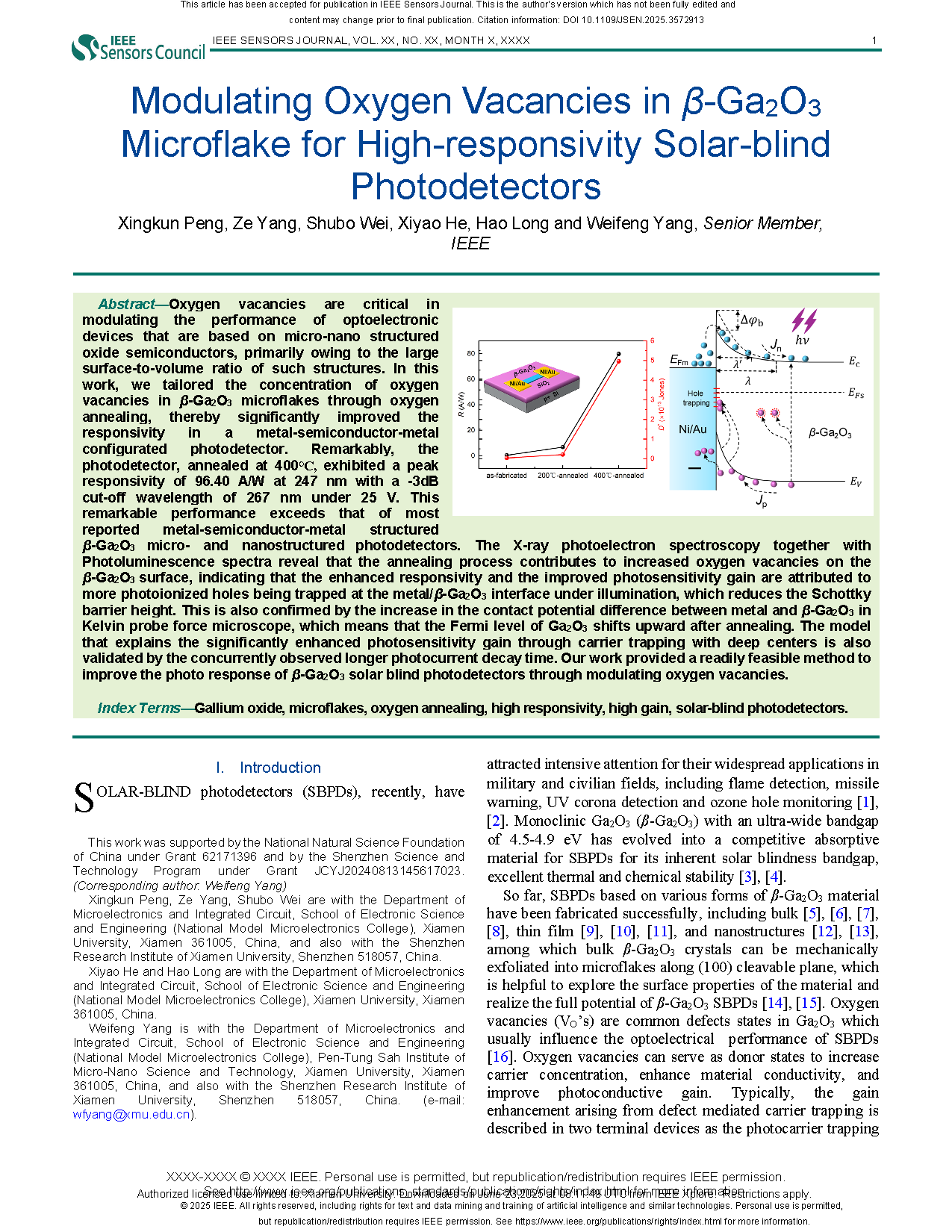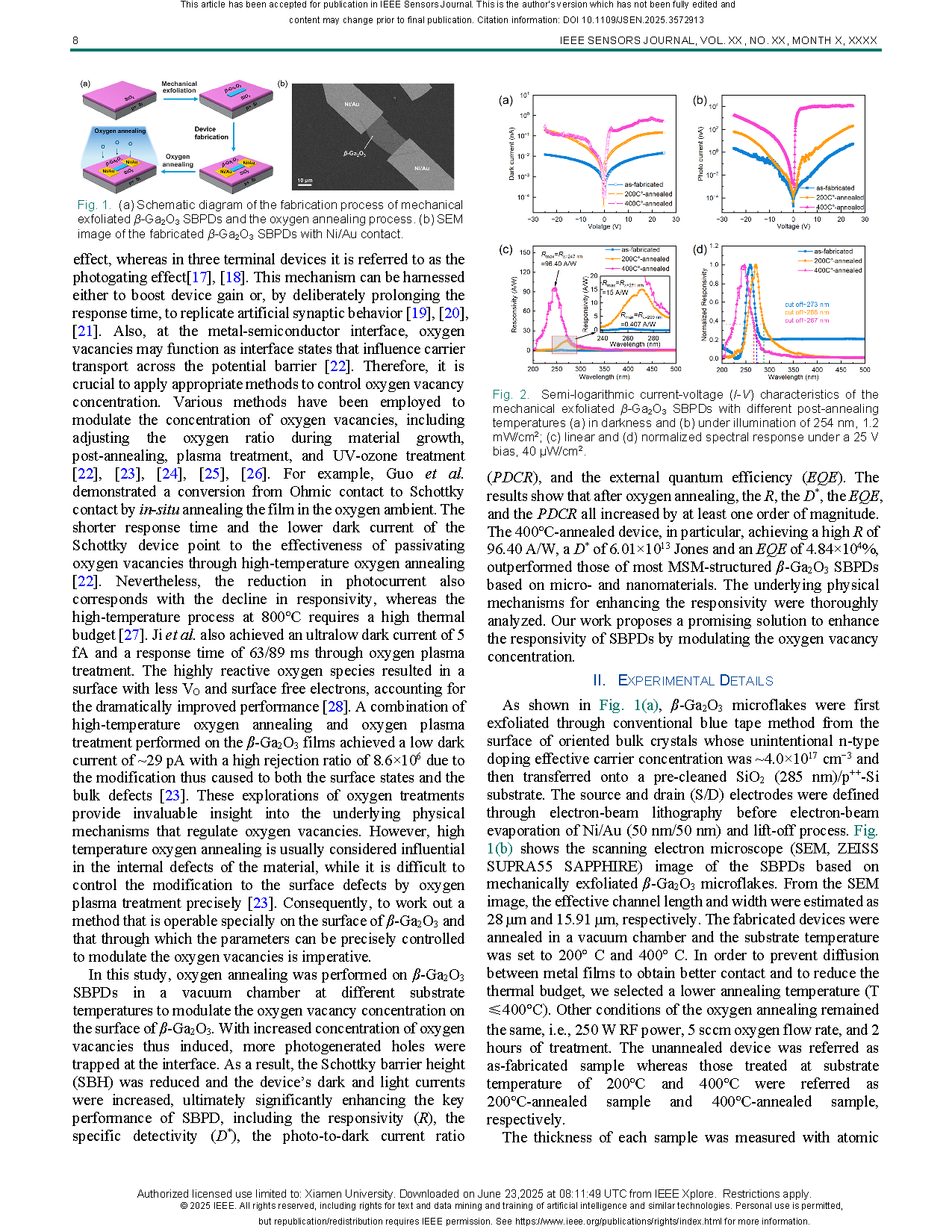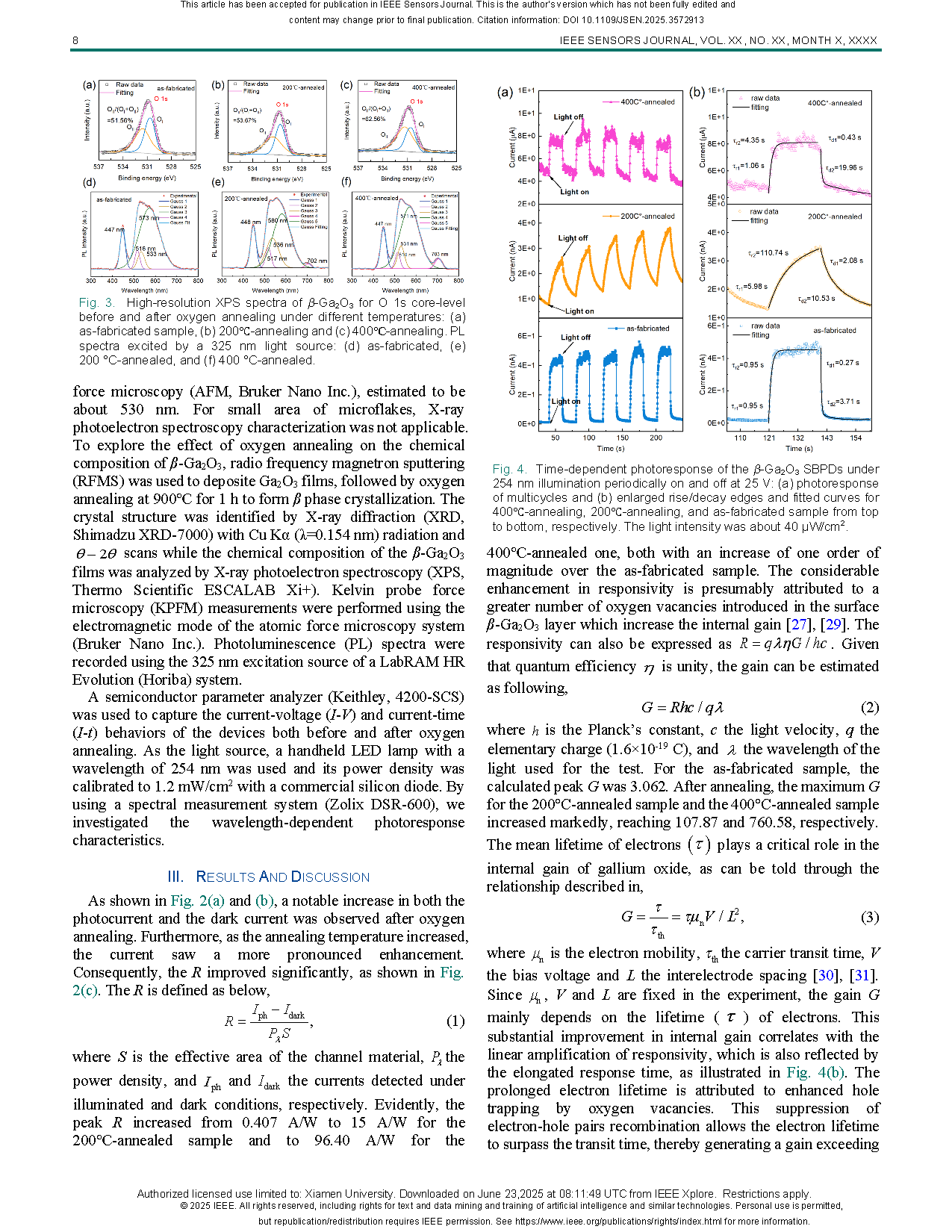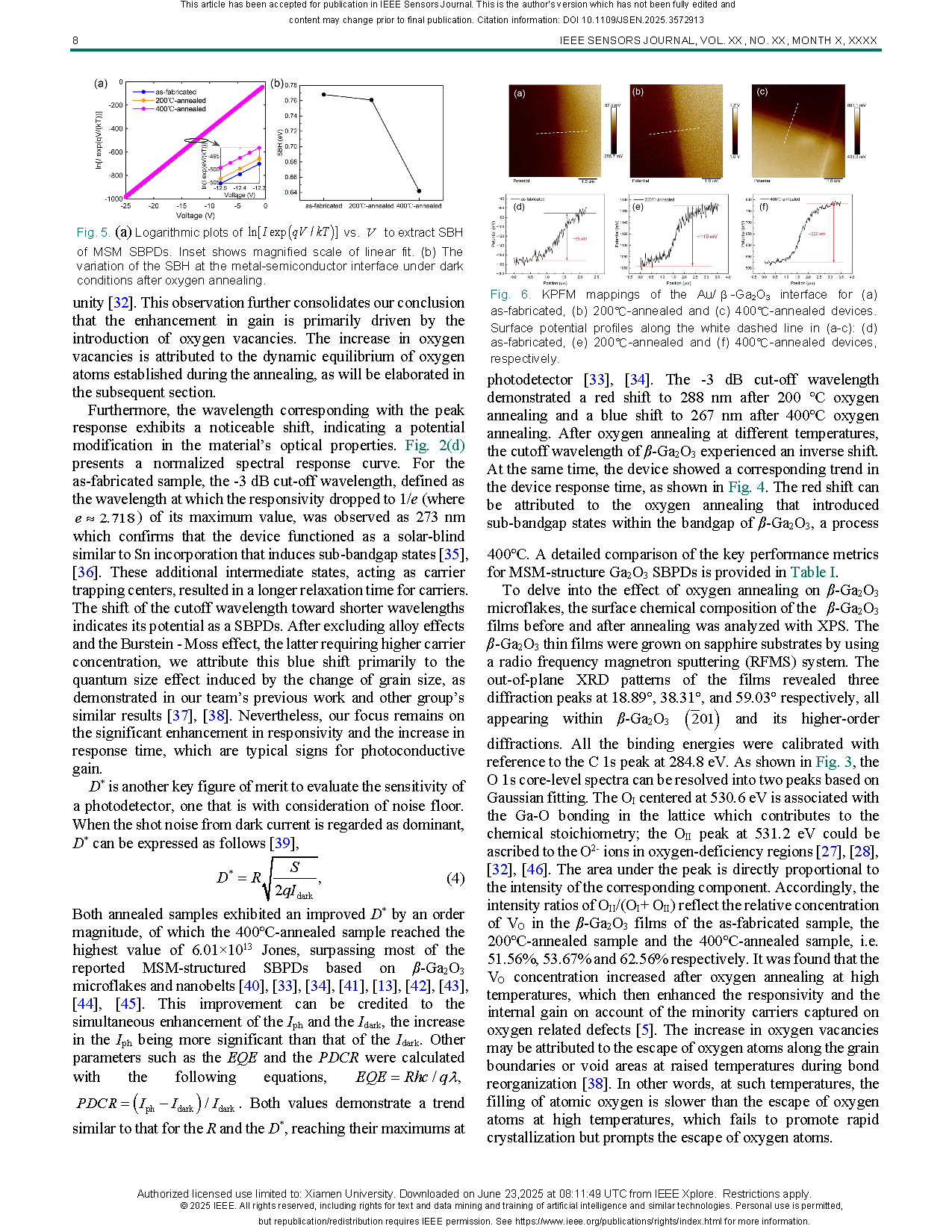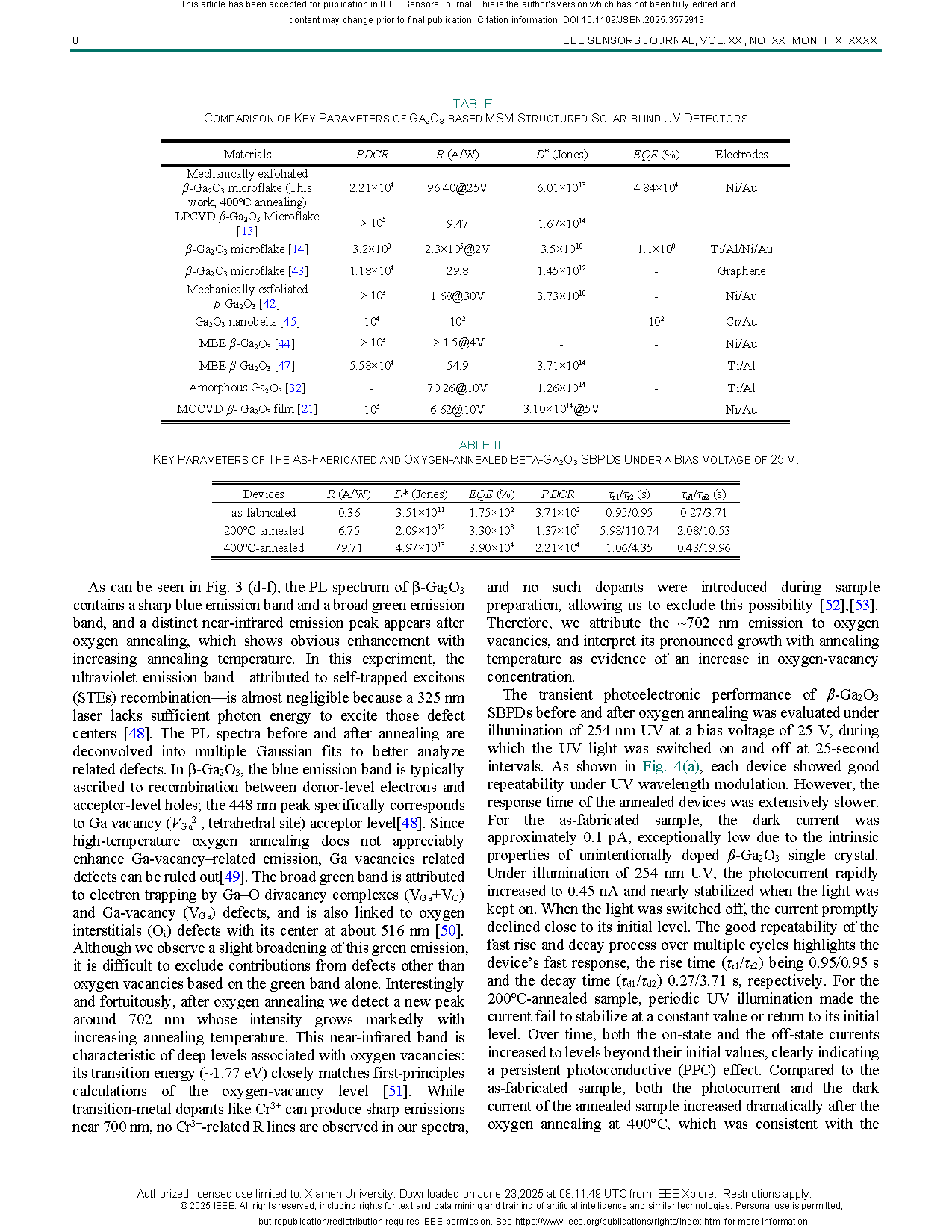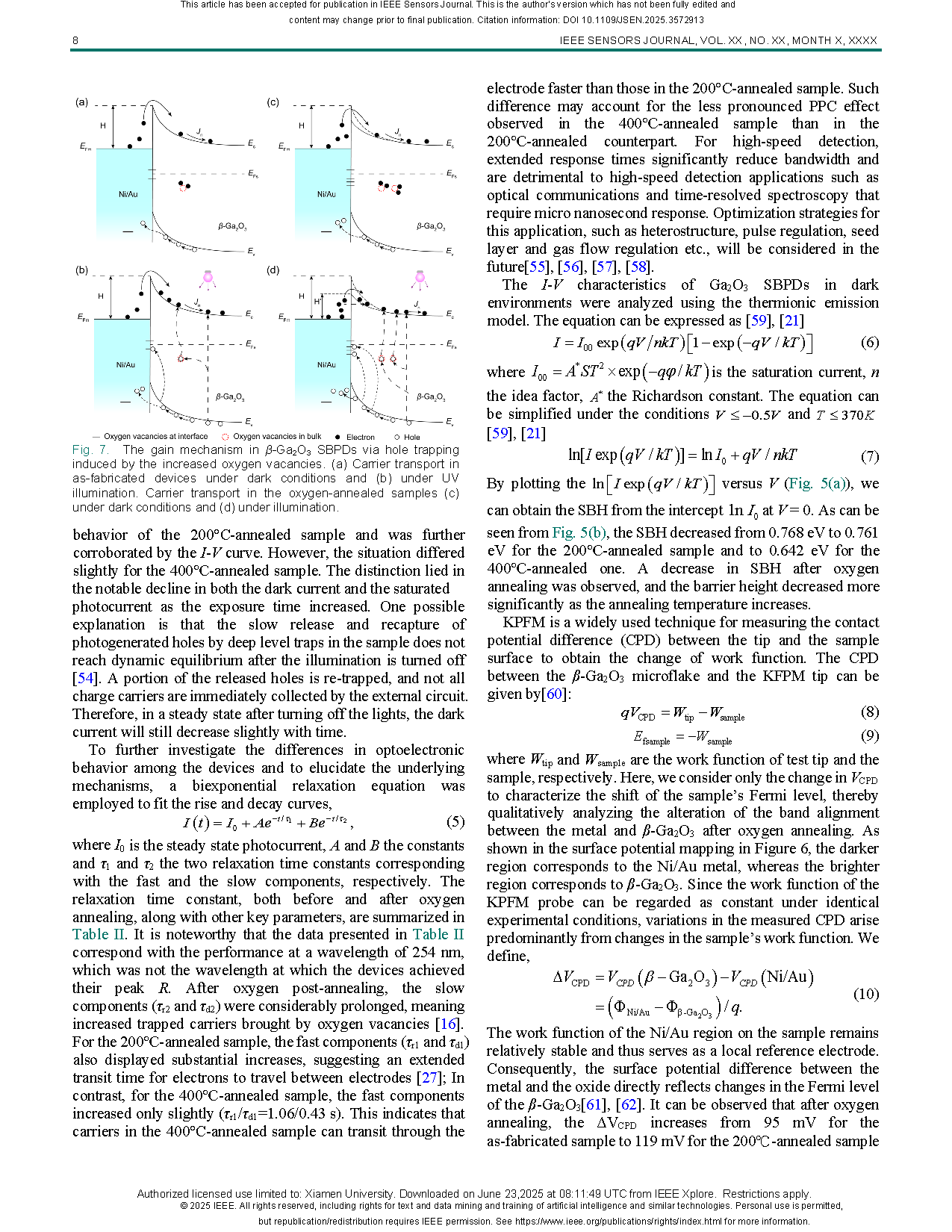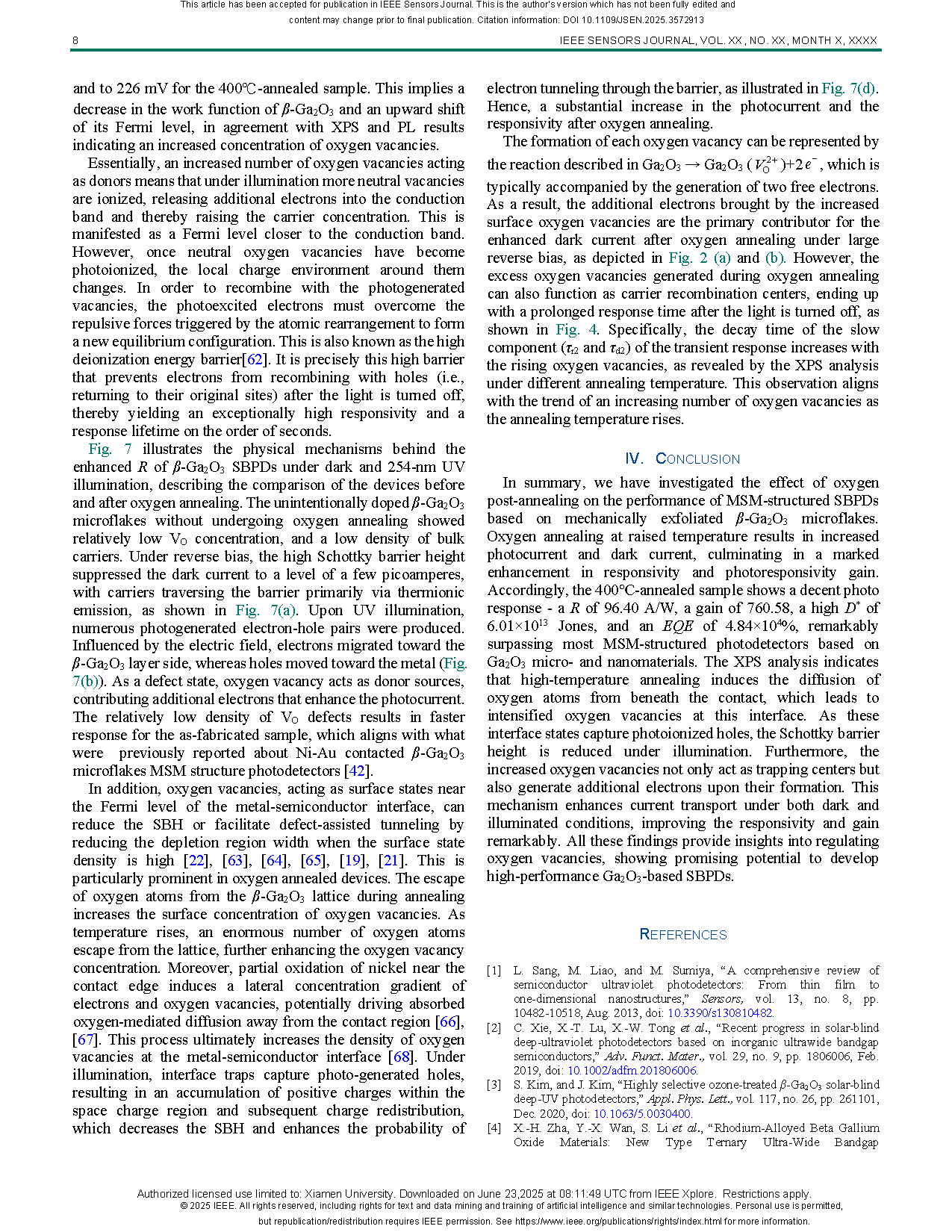

【Member Papers】Modulating Oxygen Vacancies in β-Ga₂O₃ Microflake for High-responsivity Solar-blind Photodetectors
日期:2025-06-30阅读:323
Researchers from the Xiamen University have published a dissertation titled "Modulating Oxygen Vacancies in β-Ga2O3 Microflake for High-responsivity Solar-blind Photodetectors" in IEEE Sensors Journal.
Project Support
This work was supported by the National Natural Science Foundation of China under Grant 62171396 and by the Shenzhen Science and Technology Program under Grant JCYJ20240813145617023.
Background
Solar-blind photodetectors (SBPDs), recently, have attracted intensive attention for their widespread applications in military and civilian fields, including flame detection, missile warning, UV corona detection and ozone hole monitoring. Monoclinic Ga2O3 (β-Ga2O3) with an ultra-wide bandgap of 4.5-4.9 eV has evolved into a competitive absorptive material for SBPDs for its inherent solar blindness bandgap, excellent thermal and chemical stability. So far, SBPDs based on various forms of β-Ga2O3 material have been fabricated successfully, including bulk thin film and nanostructures among which bulk β-Ga2O3 crystals can be mechanically exfoliated into microflakes along (100) cleavable plane, which is helpful to explore the surface properties of the material and realize the full potential of β-Ga2O3 SBPDs. Oxygen vacancies (VO’s) are common defects states in Ga2O3 which usually influence the optoelectrical performance of SBPDs. Oxygen vacancies can serve as donor states to increase carrier concentration, enhance material conductivity, and improve photoconductive gain. Typically, the gain enhancement arising from defect mediated carrier trapping is described in two terminal devices as the photocarrier trapping effect, whereas in three terminal devices it is referred to as the photogating effect.
Abstract
Oxygen vacancies are critical in modulating the performance of optoelectronic devices that are based on micro-nano structured oxide semiconductors, primarily owing to the large surface-to-volume ratio of such structures. In this work, we tailored the concentration of oxygen vacancies in β-Ga2O3 microflakes through oxygen annealing, thereby significantly improved the responsivity in a metal-semiconductor-metal configurated photodetector. Remarkably, the photodetector, annealed at 400°C, exhibited a peak responsivity of 96.40 A/W at 247 nm with a -3dB cut-off wavelength of 267 nm under 25 V. This remarkable performance exceeds that of most reported metal-semiconductor-metal structured β-Ga2O3 micro- and nanostructured photodetectors. The X-ray photoelectron spectroscopy together with Photoluminescence spectra reveal that the annealing process contributes to increased oxygen vacancies on the β-Ga2O3 surface, indicating that the enhanced responsivity and the improved photosensitivity gain are attributed to more photoionized holes being trapped at the metal/β-Ga2O3 interface under illumination, which reduces the Schottky barrier height. This is also confirmed by the increase in the contact potential difference between metal and β-Ga2O3 in Kelvin probe force microscope, which means that the Fermi level of Ga2O3 shifts upward after annealing. The model that explains the significantly enhanced photosensitivity gain through carrier trapping with deep centers is also validated by the concurrently observed longer photocurrent decay time. Our work provided a readily feasible method to improve the photo response of β-Ga2O3 solar blind photodetectors through modulating oxygen vacancies.
Conclusion
In summary, we have investigated the effect of oxygen post-annealing on the performance of MSM-structured SBPDs based on mechanically exfoliated β-Ga2O3 microflakes. Oxygen annealing at raised temperature results in increased photocurrent and dark current, culminating in a marked enhancement in responsivity and photoresponsivity gain. Accordingly, the 400℃-annealed sample shows a decent photo response - a R of 96.40 A/W, a gain of 760.58, a high D* of 6.01×1013 Jones, and an EQE of 4.84×104 %, remarkably surpassing most MSM-structured photodetectors based on Ga2O3 micro- and nanomaterials. The XPS analysis indicates that high-temperature annealing induces the diffusion of oxygen atoms from beneath the contact, which leads to intensified oxygen vacancies at this interface. As these interface states capture photoionized holes, the Schottky barrier height is reduced under illumination. Furthermore, the increased oxygen vacancies not only act as trapping centers but also generate additional electrons upon their formation. This mechanism enhances current transport under both dark and illuminated conditions, improving the responsivity and gain remarkably. All these findings provide insights into regulating oxygen vacancies, showing promising potential to develop high-performance Ga2O3-based SBPDs.

Fig. 1. (a) Schematic diagram of the fabrication process of mechanical exfoliated β-Ga2O3 SBPDs and the oxygen annealing process. (b) SEM image of the fabricated β-Ga2O3 SBPDs with Ni/Au contact.
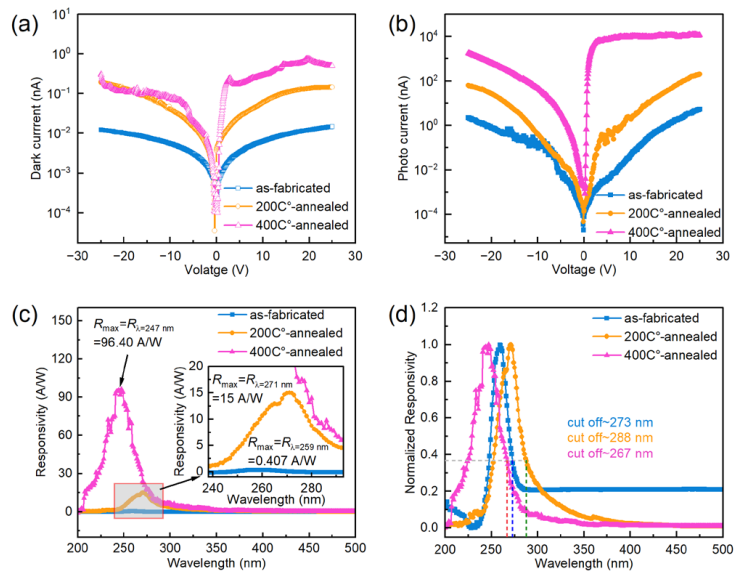
Fig. 2. Semi-logarithmic current-voltage (I-V) characteristics of the mechanical exfoliated β-Ga2O3 SBPDs with different post-annealing temperatures (a) in darkness and (b) under illumination of 254 nm, 1.2 mW/cm2; (c) linear and (d) normalized spectral response under a 25 V bias, 40 μW/cm2.
DOI:
doi.org/10.1109/JSEN.2025.3572913
